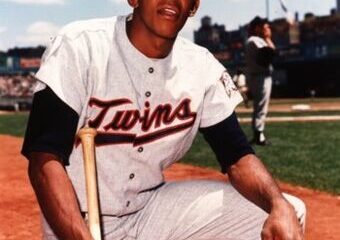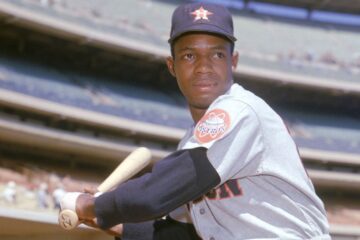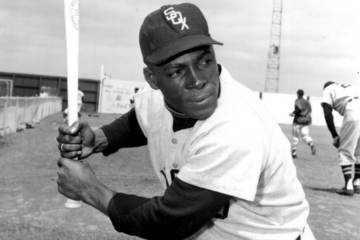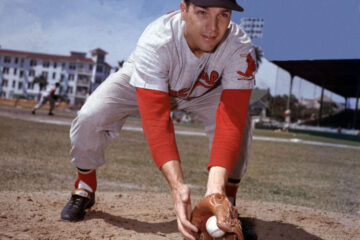The Hall of Fame Index: Ryan Braun vs. George Foster and Heinie Manush
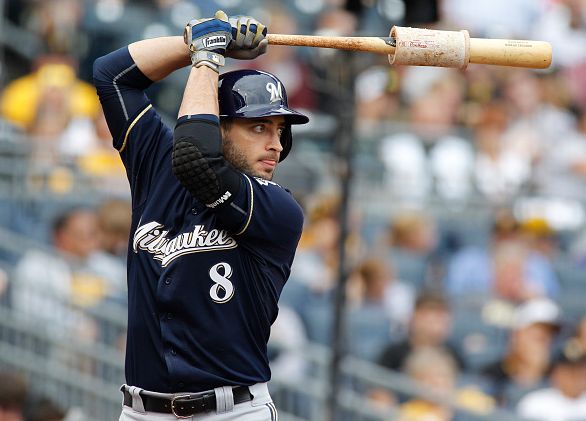
The Hall of Fame vote is a human endeavor. The LPGA Tour has taken that concept away from their sport by just having a certain number of tournament wins get you automatically in. As much as I would love to have a system like the Hall of Fame Indexor JAWS decide who should get in, there is no substitution for the debate that the current ballot system affords us. At the end of the day, the index helps in this debate by at least putting players into their proper context.
We say all this to bring up the sordid case of Ryan Braun. Of course, Braun isn’t done, but the specter of losing out on the 2020 season certainly doesn’t help him put up those counting numbers we’ve become accustomed to from Hall of Fame candidates. He has surpassed 1100 RBI, 1000 runs scored, and will surpass 2000 hits in his next full season. So, he’s met some minimum requirements.
The problem is that Braun is something of a pariah after his positive PED test. However, that doesn’t even really tell the whole story. His suspension came in 2013 following five consecutive 100+ RBI seasons and three seasons where he finished in top three in MVP voting (including the 2011 award). He accused a courier of mishandling his sample and almost ruined the man’s career. This all the while knowing he was guilty. It was seven years ago and it might be 15 years once he is retired and eligible for the ballot. Will that be enough time for people to forget that whole horrible mess?
Career Value
| BWAR | FWAR | WS/5 | Total | |
| Heinie Manush | 47.2 | 43.1 | 57.0 | 147.3 |
| Ryan Braun | 46.8 | 43.7 | 55.2 | 145.7 |
| George Foster | 44.2 | 47.1 | 53.8 | 145.1 |
The whole point of the index is to set up an environment where we can get an accurate look at a player’s value. Career value is only one part of the equation. Manush is a Hall of Famer, but most historical observers tend to doubt that he belongs. So, to call Braun similar to these two indicates that he probably hasn’t done enough either. Yet, viewing him in this prism gives us an idea of how much more he would need to do to put himself in that conversation.
Braun wouldn’t be the first player to have character concerns affect how people look at his numbers. There are others that are covered in more detail in the book (see the hyperlink above) that are stuck on the outside looking in because of perceived character flaws. Whether Braun is a good guy that made a horrible mistake, or a horrible guy is hard to say. He hasn’t done anything else objectionable in that time, but is redeemable?
Peak Value
| BWAR | FWAR | WS/5 | Total | Index | |
| Braun | 43.5 | 38.9 | 47.4 | 129.8 | 275.5 |
| Manush | 40.4 | 37.3 | 46.0 | 123.7 | 271.0 |
| Foster | 37.9 | 40.8 | 44.2 | 122.9 | 268.0 |
Foster and Braun are eerily similar players. They played in two different eras, so their numbers aren’t necessarily similar on their face, but in terms of their impact they are very similar. Foster kicked around for several years before bursting on the scene in 1975 and was the MVP by 1977. He was incredibly productive until all of the sudden he wasn’t. He was unceremoniously released in 1986 and was done. He was 37.
Braun is currently 35 and it looks like there will be no age 36 season. He didn’t struggle in the beginning like Foster did, but their careers have taken a similar path. Following his PED suspension, he has been good, but never quite as good as he was. If his career has a similar abrupt end it wouldn’t be that big of a surprise. 2020 is the last guaranteed year of his contract, but he does have an option for 2021.
Offensive Numbers
| OPS+ | Rbaser | OW% | wOBA | |
| Braun | 135 | 24 | .670 | .380 |
| Foster | 126 | -10 | .627 | .360 |
| Manush | 121 | 16 | .644 | .389 |
Keep in mind that Braun is not completely done. Even if the Brewers end up releasing him after 2020, we can probably surmise that someone will give him a contract in 2021. He is coming off a season with a 116 OPS+. He hasn’t produced a 135 OPS+ season since 2016 and that was his only such season since his PED bust. We say all this to say that the longer he plays the worse his numbers above are likely to be. So, he could approach Foster and Manush before all is said and done.
Manush himself demonstrates the folly of going with counting numbers for our analysis. He had a career .330 average and that by itself probably got him into Cooperstown. Still, his .377 career OBP was not particular special and that is especially true given when he played. For someone noted for a high batting average, he had only one batting title. Numbers always have a context and we have to remember that.
Fielding Numbers
| Rfield | DWAR | TZOF | DWS/5 | |
| Foster | 38 | -3.4 | 20 | 7.9 |
| Manush | -1 | -7.7 | -1 | 7.8 |
| Braun | -31 | -9.8 | -23 | 5.2 |
These numbers speak for themselves, but we should note that Braun opened his career as a third baseman. He was whopping -32 runs according to defensive runs saved in one season as a third baseman. That made him the 35thranked third baseman in the game that season which was the worst amongst qualified third basemen. The Brewers immediately moved him to left field. He is +23 runs in left field according to the same metric.
It is true that Rfield and UZR are not nearly as kind, but at least there is some doubt as to whether he is truly awful or not. The true answer is that he probably mediocre as a left fielder. He was also tried in right field in 2014 and 2015 and that turned out to be a failed experiment. So, keep him in left field and he does okay.
Playoff Numbers
| PA | SLASH | HR | Runs | RBI | |
| Braun | 112 | .337/.375/.500 | 2 | 9 | 16 |
| Foster | 85 | .289/.353/.434 | 3 | 11 | 12 |
| Manush | 20 | .111/.200/.111 | 0 | 2 | 0 |
On a long enough timeline, the survival rate drops to zero. While Manush’s .311 playoff OPS isn’t impressing anyone, we have to remember that it is only 20 plate appearances. That’s five games. Anything can happen in five games. Braun’s numbers look good, but they have also produced exactly zero World Series appearances.
Foster to his credit was a part of two World Series champions and narrowly missed being a part of the 1986 Mets squad. So, out of the group he probably adds more to his resume with his playoff performances than anyone. Still, none of them are really close enough for it to make a real difference. If Braun produces two more full seasons, he might get close enough to make a difference, but at this point that looks like a long shot.
BWAR MVP Points
| Top 10 | Top 5 | MVP | Points | |
| Braun | 2 | 2 | 0 | 16 |
| Foster | 3 | 1 | 0 | 14 |
| Manush | 2 | 1 | 0 | 11 |
Braun and Foster are also similar in that they didn’t deserve their MVP. As we know, MVPs are voted on primarily on hitting numbers, but neither were particularly valuable defensively. This isn’t their fault. Left fielders aren’t particularly valuable. WAR doesn’t discriminate, so we see that someone else did more in those seasons.
Braun has the advantage here, but it isn’t by much. It depends on how much extra an additional top five finish really gets you. At this point, it is highly unlikely that he even gets to play every day, much less put up any additional top ten seasons. His best bet is to turn himself into a Nelson Cruz. Cruz hasn’t produced top ten seasons despite hitting nearly 40 homers per season. So, these players will remain similar. They are legitimately good players, but not quite worthy of Cooperstown.


